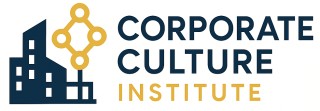
Understanding the Role of Habits in Corporate Environments
The Power of Habits in Corporate Settings
The role habits play in shaping corporate environments cannot be underestimated. These behavioral patterns, which are essentially routines triggered by certain cues and reinforced by rewards, form the underpinnings of collective and individual actions within companies. This repetitive cycle, often described as the 'habit loop', holds significant power, influencing everything from productivity to the overall organizational culture.
Bestsellers such as 'The Power of Habit' by Charles Duhigg have illuminated how habits drive behaviors not just in personal spheres, but also in professional ones. According to the science articulated in such books, habits reside in the brain's basal ganglia, a region that also governs decision-making and emotions. This neurological basis demonstrates why habits, once formed, are challenging to change without deliberate intervention.
As individuals within corporations develop habits, each person contributes to a conglomerate of routines that define the company's culture. Recognizing and harnessing these habitual patterns can lead to progressive change and improvement. For instance, identifying 'keystone habits'—those that have a ripple effect on other behaviors—can serve as a strategic tool for fostering a positive work culture.
Despite the influence of habits, change is possible through structured approaches and the implementation of effective reward systems. This subject also delves into the common challenges companies face with 'bad habits' that impede performance and efficiency. Understanding these challenges is crucial in strategizing for behavioral adjustments that promote growth and a healthy work environment.
The Science Behind Habit Formation
The Mechanics of Habit Formation
Understanding the intricacies of habit formation in the corporate environment provides a pivotal advantage to harness its potential. At its core, habit formation is a repetitive cycle often encapsulated in the habit loop concept. This loop consists of three main components: cue, routine, and reward.
The cue acts as a trigger for the brain, signaling the start of a specific behavior. It's this trigger that leads individuals to move into the routine phase, where the actual behavior or action occurs. Finally, there is the reward, which solidifies the habit, providing a sense of satisfaction or relief. It is this feeling of accomplishment that wires the brain to repeat the process, reinforcing the habit loop over time.
The Brain’s Role in Habit Establishment
Insights from behavioral sciences underscore the brain's adaptation to cues and rewards. As illustrated in habit research, like the work mentioned in "The Power of Habit" by Charles Duhigg, the brain’s ability to latch onto cues and establish routines ensures efficiency. Essentially, the brain economizes on effort by forming habits, allowing cognitive resources to be preserved for more complex tasks. During routine tasks, brain activity decreases, showcasing how deeply nations habits are retained.
Books such as those written by Charles Duhigg shine light on the subconscious reinforcements of these behaviors. If you're interested in a deeper dive, understanding the role of these components in workplace practices is essential.
Although the habitual cycle may seem simple, altering a habit is significantly intricate. The process often involves revisiting the cue-routine-reward loop to identify alternations that might interrupt or replace the current pattern. By understanding these mechanics, teams can better navigate the complexities of habit change.
For those keen to explore further, downloadable resources such as habit-related PDFs provide ample information to develop keystone habits effectively. Prioritizing a deeper comprehension of these foundational elements enriches the journey towards cultivating a productive and positive corporate culture.
Strategies for Cultivating Positive Habits
Fostering a Culture of Constructive Behaviors
Cultivating positive habits within a corporate setting is not just about individual behavior adjustment; it's about nurturing an environment where constructive routines are embraced by the team as a whole. Positive behaviors, when encouraged in a structured way, can significantly enhance overall corporate culture. One effective way to inculcate these positive routines is by identifying "keystone habits". These are small, yet impactful habits that can set off a chain reaction of positive change in your organization. In his acclaimed book, Charles Duhigg emphasizes the influence of these habits on broader organizational patterns. By focusing on keystone habits, teams can harness the power of routine to achieve substantial improvements. Here are some strategies to implement constructive habits effectively:- Identify and Prioritize: Begin by identifying which habits you want to cultivate in your corporate environment. This might involve habits that enhance teamwork, punctuality, or innovation. Prioritizing these habits ensures that focus is maintained on the most impactful behaviors.
- Leverage Cue, Routine, Reward Loop: Understanding the cycle of cue, routine, and reward is crucial. Tailor cues that trigger the desired behavior, establish a routine that is simple to follow, and ensure rewards are meaningful to reinforce the behavior. This loop is central to habit formation, as documented in the science of habit development.
- Regular Training and Reinforcement: Provide training sessions that highlight the importance of the desired habits. Utilize resources such as habit-based workshops or relevant downloads that can be integrated into the daily schedule to reinforce learning and practice.
- Monitor Progress and Provide Feedback: Establish systems to monitor habit formation progress. Encourage leaders and managers to provide regular feedback, celebrating successes and addressing challenges promptly. This ensures ongoing motivation and guides employees back on track when needed.
Overcoming Negative Habits in the Workplace
Breaking the Chain of Negative Repetitions
In the journey to foster a healthy corporate culture, identifying and overcoming negative habits is a paramount step. Often, workplace habits, albeit detrimental, seem firmly rooted like an ancient oak. Yet, understanding and intentionally changing these habits can radically alter the workplace dynamics. Negative habits can emerge as powerful undercurrents within an organization, impacting productivity and morale. Recognizing this, companies should focus on replacing adverse habits with constructive routines. The science habit shows that habits are formed through a loop cue, routine, and reward. Breaking free from negative loops requires an understanding of these components. The power habit concept reveals a typical cycle: it begins with a cue, followed by a routine, and concludes with a reward. Habit change is possible when we pinpoint triggers and draft a strategy to modify the ensuing routine. For instance, if a habitual morning meeting drags and dampens mood due to lack of focus, altering the structure per the keystone habits model can make them more productive and engaging. One method to shift from a negative to a positive framework is to reassess the cues and rewards. Changing the routine involves introducing new behaviors that align with the organizational goals, thus laying bricks for a new culture grounded in values. The habit book by Charles Duhigg, which explores these dynamics, provides insightful strategies for this transformation. Employees can reference the habit pdf or download file on habit life to delve deeper into these strategies. Encouraging team members to reflect on their habits and adopt the power of change can revitalize workplace morale. Providing access to resources like books and training sessions aids in reinforcing these principles. By cultivating an environment that favors open dialogue and personal growth, organizations can steer their culture towards positivity and shared success. In conclusion, turning negative habits into opportunities for growth requires deliberate actions backed by insights from texts like those of Charles Duhigg. By understanding the habit loop and focusing on changing the routine, positive outcomes can be achieved, enhancing the overall corporate culture.Case Studies: Successful Habit Implementation
Real-Life Examples of Positive Habit Implementation in Corporations
Successful habit implementation within corporate environments often draws inspiration from real-life examples. The science behind habit formation sheds light on how companies can leverage the "habit loop"—cue, routine, and reward—to create meaningful change. One example involves a technology company that identified the need for better team collaboration. By introducing habits such as a morning check-in meeting (cue) with a structured agenda (routine), followed by recognition of individual contributions (reward), the organization effectively boosted productivity. This approach aligns with the insights drawn from habit-related books, where emphasis is placed on creating keystone habits that drive broader changes. In another scenario, a retail giant faced challenges with employee engagement, resulting in high turnover rates. The company's leadership focused on the "power habit" of regular feedback and communication. By establishing weekly one-on-one reviews as a routine, and providing recognition for improvements (reward), the company noticed significant improvements in employee satisfaction. Finally, an automotive firm's commitment to sustainability was bolstered by cultivating habits among its staff. They adopted a "change" strategy to create a sustainability-focused culture. Regular environmental audits (cue) followed by team-led workshops on eco-friendly practices (routine) and incentives for sustainable solutions (reward) exhibited how strategically targeting habits can bring considerable success. These case studies illustrate the profound impact that thoughtfully cultivated habits can have on an organization’s culture. Aligning outcomes with the goals of the company and tapping into the intrinsic "habit life" of employees can lead to lasting positive effects.Tools and Resources for Habit Development
Essential Tools and Resources for Habit Development in Corporate Culture
In the ever-evolving landscape of corporate culture, the power of habits cannot be overlooked. To foster a productive environment, organizations must equip themselves with the right tools and resources to aid in habit development. Here's a compilation of some useful tools to assist in this journey:- Books on Habit Formation: Literature offers a deep dive into understanding the intricate nature of habits. One widely recognized book is "The Power of Habit" by Charles Duhigg, which discusses the concept of habit loops—comprised of cue, routine, and reward—and how they affect our daily lives. Reading such books can provide valuable insights into changing routine patterns and creating positive habits.
- Digital Resources and PDFs: Numerous downloads and PDFs are available online that elaborate on habit formation science and how the brain plays a crucial role in this process. These resources can be beneficial for quick reference and shareable among team members to enhance collective learning.
- Habit Tracking Applications: Implementing changes in behavior requires monitoring progress. Applications that allow you to track habits, visualize patterns, and set reminders can be powerful tools for ensuring new habits are sustained. Features such as OCR for scanning text related to daily habits can add convenience for users.
- Workshops and Training Sessions: Encouraging team participation in workshops dedicated to understanding habits can lead to the adoption of keystone habits that drive overall corporate success. Interactive sessions facilitate engagement and provide practical applications of theoretical knowledge.
- Community and Support Groups: Platforms that encourage discussions and sharing experiences about habit changes foster a sense of community. This exchange of knowledge can help individuals understand the challenges of breaking bad habits and reinforce positive change.
- Privacy Policies: While exploring tools and resources, it’s crucial to remain mindful of privacy policies associated with digital tools. Understanding these policies helps protect personal and organizational data while leveraging technology for habit formation.













